Residence France Fields Mathematician Role Mathematician | Name Jacques Hadamard Nationality French | |
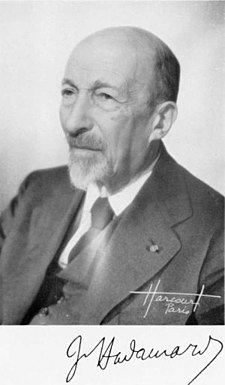 | ||
Born 8 December 1865Versailles, France ( 1865-12-08 ) Institutions University of BordeauxSorbonneCollege de FranceEcole PolytechniqueEcole Centrale Alma mater Ecole Normale Superieure Thesis Essai sur l'etude des fonctions donnees par leur developpement de Taylor (1892) Doctoral students Maurice Rene FrechetMarc KrasnerPaul LevySzolem MandelbrojtAndre WeilXinmou Wu Died October 17, 1963, Paris, France Education Lycee Louis-le-Grand, Ecole Normale Superieure Books An essay on the psycholo, Lessons in geometry, Lectures on Cauchy's, Non‑Euclidean Geometry in the The, Propagation of Waves and the E Similar People Maurice Rene Frechet, Paul Levy, Emile Picard, Szolem Mandelbrojt, Andre Weil | ||
Jacques hadamard
Jacques Salomon Hadamard ForMemRS ([adamaʁ]; 8 December 1865 – 17 October 1963) was a French mathematician who made major contributions in number theory, complex function theory, differential geometry and partial differential equations.
Contents
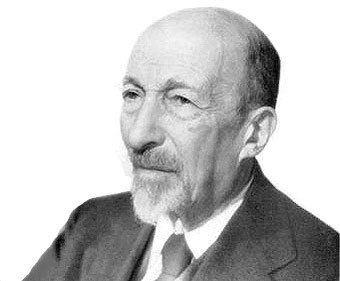
Biography
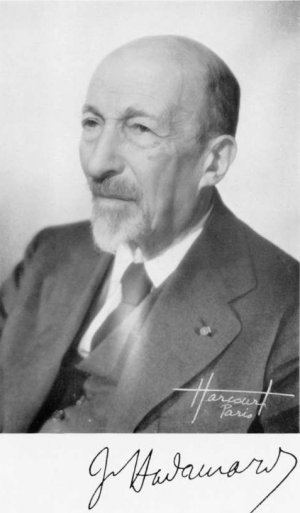
The son of a teacher, Amédée Hadamard, of Jewish descent, and Claire Marie Jeanne Picard, Hadamard was born in Versailles, France and attended the Lycée Charlemagne and Lycée Louis-le-Grand, where his father taught. In 1884 Hadamard entered the École Normale Supérieure, having placed first in the entrance examinations both there and at the École Polytechnique. His teachers included Tannery, Hermite, Darboux, Appell, Goursat and Picard. He obtained his doctorate in 1892 and in the same year was awarded the Grand Prix des Sciences Mathématiques for his essay on the Riemann zeta function.
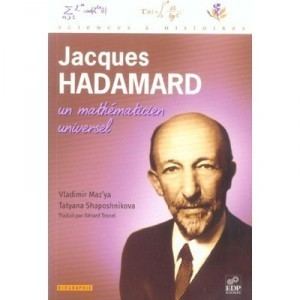
In 1892 Hadamard married Louise-Anna Trénel, also of Jewish descent, with whom he had three sons and two daughters. The following year he took up a lectureship in the University of Bordeaux, where he proved his celebrated inequality on determinants, which led to the discovery of Hadamard matrices when equality holds. In 1896 he made two important contributions: he proved the prime number theorem, using complex function theory (also proved independently by Charles Jean de la Vallée-Poussin); and he was awarded the Bordin Prize of the French Academy of Sciences for his work on geodesics in the differential geometry of surfaces and dynamical systems. In the same year he was appointed Professor of Astronomy and Rational Mechanics in Bordeaux. His foundational work on geometry and symbolic dynamics continued in 1898 with the study of geodesics on surfaces of negative curvature. For his cumulative work, he was awarded the Prix Poncelet in 1898.
After the Dreyfus affair, which involved him personally because his second cousin Lucie was the wife of Dreyfus, Hadamard became politically active and a staunch supporter of Jewish causes though he professed to be an atheist in his religion.
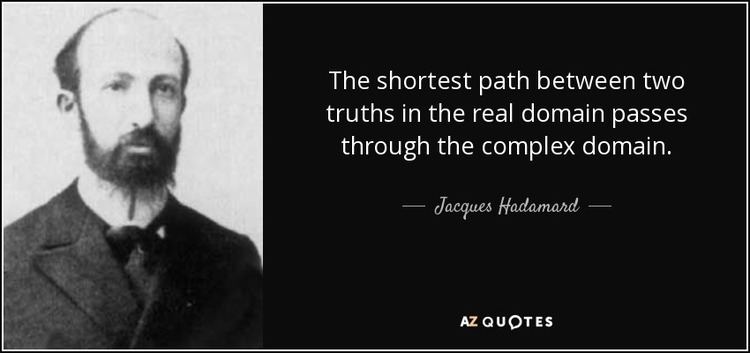
In 1897 he moved back to Paris, holding positions in the Sorbonne and the Collège de France, where he was appointed Professor of Mechanics in 1909. In addition to this post, he was appointed to chairs of analysis at the École Polytechnique in 1912 and at the École Centrale in 1920, succeeding Jordan and Appell. In Paris Hadamard concentrated his interests on the problems of mathematical physics, in particular partial differential equations, the calculus of variations and the foundations of functional analysis. He introduced the idea of well-posed problem and the method of descent in the theory of partial differential equations, culminating in his seminal book on the subject, based on lectures given at Yale University in 1922. Later in his life he wrote on probability theory and mathematical education.
Hadamard was elected to the French Academy of Sciences in 1916, in succession to Poincaré, whose complete works he helped edit. He became foreign member of the Royal Netherlands Academy of Arts and Sciences in 1920. He was elected a foreign member of the Academy of Sciences of the USSR in 1929. He visited the Soviet Union in 1930 and 1934 and China in 1936 at the invitation of Soviet and Chinese mathematicians.

Hadamard stayed in France at the beginning of the Second World War and escaped to southern France in 1940. The Vichy government permitted him to leave for the United States in 1941 and he obtained a visiting position at Columbia University in New York. He moved to London in 1944 and returned to France when the war ended in 1945.
Hadamard was awarded an honorary doctorate (LL.D.) by Yale University in October 1901, during celebrations for the bicentenary of the university. He was awarded the CNRS Gold medal for his lifetime achievements in 1956. He died in Paris in 1963, aged ninety-seven.
Hadamard's students included Maurice Fréchet, Paul Lévy, Szolem Mandelbrojt and André Weil.
On creativity
In his book Psychology of Invention in the Mathematical Field, Hadamard uses introspection to describe mathematical thought processes. In sharp contrast to authors who identify language and cognition, he describes his own mathematical thinking as largely wordless, often accompanied by mental images that represent the entire solution to a problem. He surveyed 100 of the leading physicists of the day (approximately 1900), asking them how they did their work.
Hadamard described the experiences of the mathematicians/theoretical physicists Carl Friedrich Gauss, Hermann von Helmholtz, Henri Poincaré and others as viewing entire solutions with "sudden spontaneousness".
Hadamard described the process as having four steps of the five-step Graham Wallas creative process model, with the first three also having been put forth by Helmholtz: Preparation, Incubation, Illumination, and Verification.
